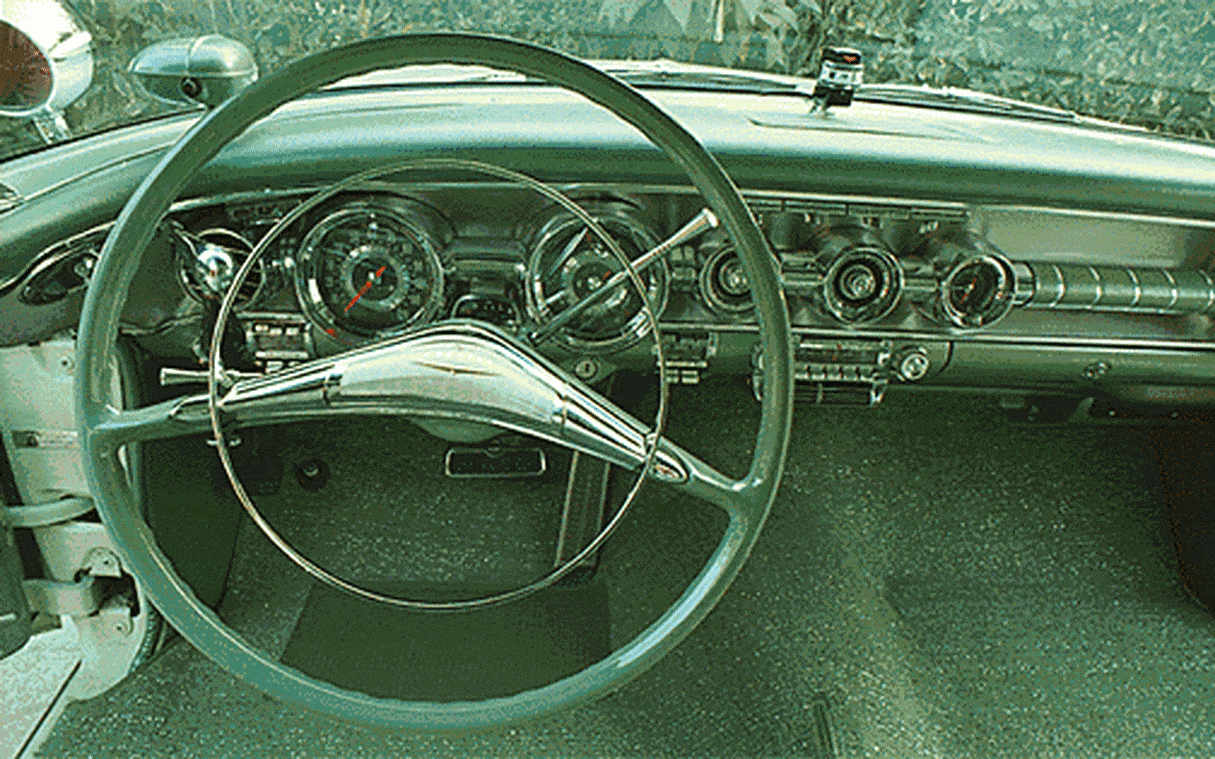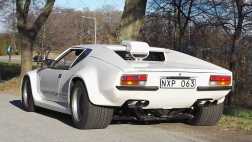Fuelled by technological innovation and a massive economic boom, 1950s car design meant that a lot of things could be founded on pure imagination.
Conventionality seemed to be well down the priority list for many brands, which was great, because few were interested in it. This is about as far away from the minimalist, postmodern designs of today as you can get. Cue the chrome.
#1 - 1958 Pontiac Bonneville
A far cry from the rubbish Yank interiors we got in the '90s, the Pontiac Bonneville interior was one of the more outlandish of its time.
_2.jpg)
Sure, most of the General Motors cars from the '50s and '60s were pretty much the same car underneath, but the GM suite of brands all had different takes on style and luxury.
_2.jpg)
With lashings of chrome dressing almost every part of the dashboard, the Bonneville had its fat dials spilling across the entire dashboard, almost creating an Italian-esque design influence.

Combine this with super squishy seats, a wraparound windscreen, chunky metal fixtures and fittings, and you have a typical American car from the 1950s: fuel efficient, restrained, and practical.
#2 - 1955 Mercedes-Benz 300SL
Many argue that the Mercedes-Benz 300SL Gullwing was the world's first supercar.
_2.jpg)
Sure, the exterior is a thing of beauty, with its gullwing doors and bonnet that touches the horizon, but remember, it's the inside where you're going to spend most of your time.
Revolving around a single piece fascia, the interior of the Mercedes-Benz 300SL utilises a clean and elegant look uplifted by appropriate amounts of chrome switchgear running along the base. Simple dials for temperatures and pressures fill the dash, accompanied by an elegant rear-view mirror mounted in the centre.
_2.jpg)
Unlike the Mercs of today there's no airbag, adaptive cruise control, or any form of adjustability on the front seats. Unless of course you're being jettisoned through the windscreen. And sure, the giant steering wheel may be asking to impale you in a head-on accident - but what a way to go!
#3 - 1955 Citroen DS
If you know cars, you would've known this'd show up sooner or later.
.jpg)
Designed by a French aeronautics engineer and an Italian sculptor, the Citroen DS is a thing or beauty. Love it or hate it, it really is one of the greatest cars of the 20th Century. A first for a whole heap of technological innovations, the Citroen DS is also recognised as having one of the most wacky (ie; French) interiors of all time.
Hidden inside a panoramic glasshouse design, the interior of the Citroen DS utilised an innovative single spoked steering wheel, a floor mounted "mushroom" brake pedal, a lever to extend or lower the suspension, multi-directional air-vents (a first), child door locks (a first), an ignition key under the steering wheel and a push button start.
.jpg)
Sure it doesn't have that same type of blinding "wow" elite-status factor that a fat Caddy would have, but it's still a great design.
#4 - 1958 Cadillac Eldorado Brougham
Speaking of fat Caddies, this one sold for $13,074 at a time when the average salary was a mere $4,657.
_2.jpg)
The top of the line Eldorado Brougham was total excess. While most personal limos of this time justified their price with shiny chrome and massive engines, Cadillac attracted attention by offering features so advanced they're still pretty fancy today. Suicide rear doors, air conditioning, power boot release, electric clock, electric door locks, and automatic headlamp dimming - in the '50s? But wait, there's more.
_2.jpg)
Magnetised drinking tumblers, check. Separate front and rear heaters, check. It even had a six-way power adjustable front seat! With a memory function! Not even a '99 Honda Civic covered in TRD stickers has that.
#5 - Morris Mini
Thanks to a super-stingy attitude to wasting space, the Mini was built around a compact design that gained a heap of interior space thanks to a bunch of ingenious innovations.
_2.jpg)
The engine was fixed in a transverse design, which allowed it (and the firewall) to be pushed further towards the headlights, lengthening the cabin. The transmission tunnel was eliminated, which allowed greater space fo' yo' feet. Even the four wheels were shoved right out to the perimeters of the car, reducing the intrusions from the wheel arches inside, making more space inside.
I dare you to tell this kind of stuff to your next date. They'll be keen as afterwards, I bet you...
_2.jpg)
It might not have the joie de vivre of the Citroen or the pompous grandeur of the Pontiac, but out of all the cars here, the Mini's interior is probably the most influential.
Do you have a favourite interior from the 1950s? Tell us what it is and why in the comments below.





_2.jpg)







.jpg)